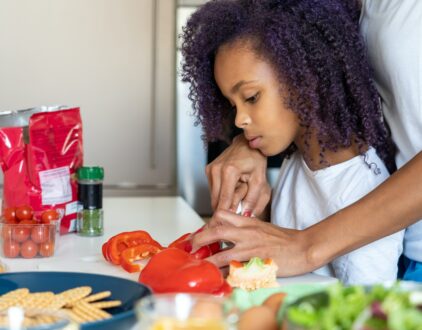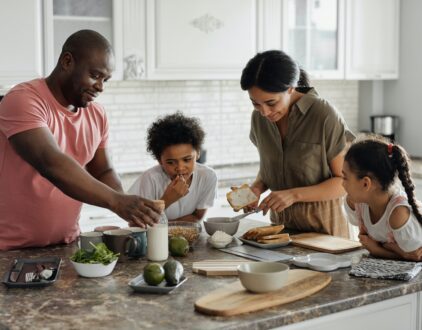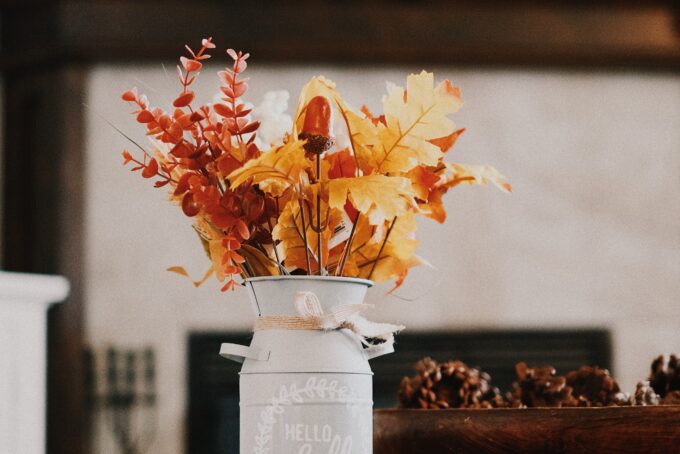Kwanzaa is a celebration of African heritage, community and culture. African American history expert Femi Lewis explained that Kwanzaa was created in 1966 by Black studies professor and chairman Dr. Maulana Karenga, bringing together African Americans and helping them reconnect with their African roots. It was an effort during the ever-growing Black nationalism of the 1960s that stuck around and later received national recognition.
The holiday is accessible for any Black person to celebrate, as it is not a religious holiday as many assume. Lewis continued by explaining that Kwanzaa was modeled after first harvest celebrations in Africa. As for the name, the meaning of “Kwanzaa” comes from the Swahili phrase “matunda ya kwanza.” This translates to the “first fruits” of the harvest.
Kwanzaa begins on the day after Christmas until Jan. 1. There are seven symbols of Kwanzaa presented throughout the seven-day holiday and a principle for each day. The seven principles in order include Umoja (unity), Kujichagulia (self-determination), Ujima (collective work and responsibility), Ujamaa (cooperative economics), Nia (purpose), Kuumba (creativity) and Imani (faith). Each day, a candle is lit to highlight the principle of the day and activities are done to highlight the given principle.
These activities consist of things like reciting the words of great Black thinkers and writers, reciting original poetry, African drumming and sharing African diaspora-inspired meals, according to the Smithsonian’s National Museum of African American History & Culture. Food has always and will always be a major part of Black culture. That of course means the Kwanzaa food traditions are abundant and varying depending on who, and in which culture, is celebrating the holiday.
Here are seven Kwanzaa food traditions or traditions related to the food and meals that define this holiday.
1. Kwanzaa Food: Karamu Feast
The Karamu, held on December 31st, marks the pinnacle of Kwanzaa celebrations. This jubilant affair is accompanied by a diverse array of dishes that pay homage to African roots and flavors. From soul-warming stews to aromatic rice dishes and succulent meats, the spread is a testament to the diversity of African culinary traditions. Dishes like jollof rice, collard greens, jerk chicken and fried plantains often grace the Karamu table, symbolizing the unity and collective prosperity celebrated during Kwanzaa.
2. Kuumba: Embracing Creativity Through Cuisine
As mentioned previously, there are seven principles that are celebrated during Kwanzaa. Kuumba, the principle celebrated on the day of the Karamu, is the principle of the sixth day of the holiday and emphasizes creativity and the continuous pursuit of excellence within the community. Lewis described Kuumba as, “to find new, innovative ways to leave communities of African descent in more beautiful and beneficial ways than the community inherited.” The culinary aspect of Kuumba is expressed through innovative cooking methods, inventive recipes and the artful presentation of dishes that honor ancestral flavors while embracing modern influences.
3. One-Pot Wonders for Karamu
A central dish that often takes center stage during Kwanzaa is a hearty one-pot meal. Dishes like Gumbo, a flavorsome stew featuring a medley of meats, vegetables and spices, symbolize the communal spirit and the coming together of diverse ingredients. Accompanying this main dish are vibrant sides that celebrate the first harvest, including dishes such as Sweet Potato Pie, Black-Eyed Peas and Cornbread, symbolizing abundance, prosperity and hope.
4. Pan-African Flag in Food and Table Setting
The colors of the Pan-African flag—red, black and green—are symbolically represented through food and table settings. Red might manifest in fiery spices or succulent tomatoes, black in hearty beans or dark leafy greens and green in fresh vegetables or herbs, infusing the celebration with symbolic significance. The Smithsonian’s National Museum of African American History & Culture explained the meaning of the colors of this flag. The red color represents the struggle, the black represents the people and the green represents the future.
5. Setting the Kwanzaa Table
Speaking of the table settings, the Kwanzaa table is usually adorned with traditional African fabrics like kente cloth, reflecting the beauty of African heritage. Candles, known as Mishumaa Saba, are placed in a Kinara, a candle holder symbolizing the Seven Principles of Kwanzaa. Utensils made from natural materials like wood or clay pay homage to African craftsmanship.
6. Mazao and Muhindi Symbols
There are also seven symbols of Kwanzaa as well as the seven principles. Mazao (crops) and Muhindi (corn) are two of these symbols. Sara Klimek for TastingTable explained that the Mazao symbolizes the fruits of labor and the abundance harvested from the earth and rewarded to the community for its group effort. On the other hand, Klimek wrote that the corn symbolizes children and the future. These symbols are often incorporated into decorations and dishes. This emphasizes the importance of agriculture and the collective work ethic within the community. The other five symbols include Mkeka (Mat), Kinara (Candleholder), Mishumaa Saba (Seven Candles), Kikombe cha Umoja (Unity Cup) and Zawadi (Gifts).
7. Diverse Foods for Other Days of Kwanzaa
Throughout the seven days of Kwanzaa, different foods representing various aspects of African heritage and principles for each day are savored. For instance, dishes like Akara (fried bean cakes) and Fufu (pounded yam) honor different African regions and traditions. Each day offers an opportunity to explore and embrace the diverse culinary landscape of the African diaspora.
Other Kwanzaa foods and beverages to celebrate the holiday, recommended by Smithsonian’s National Museum of African American History & Culture, include those of Chef Jessica Harris from her book Celebrating the Holiday with New Traditions and Feasts. The recipes include molasses water for Karamu, as well as seasoned olives, Caribbean sorrel, sauteed pecans and more.
popular posts
- 1It’s Black Business Month, So Let’s Go Shopping and #BuyBlack!
- 2These Home Decor Items Will Instantly Make Your Space Look Outdated
- 3Black-Owned Home Decor Stores To Support Across the United States
- 4A Look Inside Elon Musk's Tiny $50,000 House
- 57 Black and Multicultural Designers To Follow For Design Inspo
Spaces
Whether it’s luxury or ease, every area of your home should be as fabulous and unique as you.
Get a Head Start on Spooky Season With HomeGoods Halloween Decor
by Kelsey Marie | June 29, 2023
Pottery Barn Released Super Chic Vintage-Inspired Halloween Decor
by Erika Hardison | August 3, 2023
FOLLOW ALONG ON INSTAGRAM
#homeandtexture
Find us on social for more home inspiration where culture, personal style, and sophisticated shopping intersect to help you create a home where you love to live.








